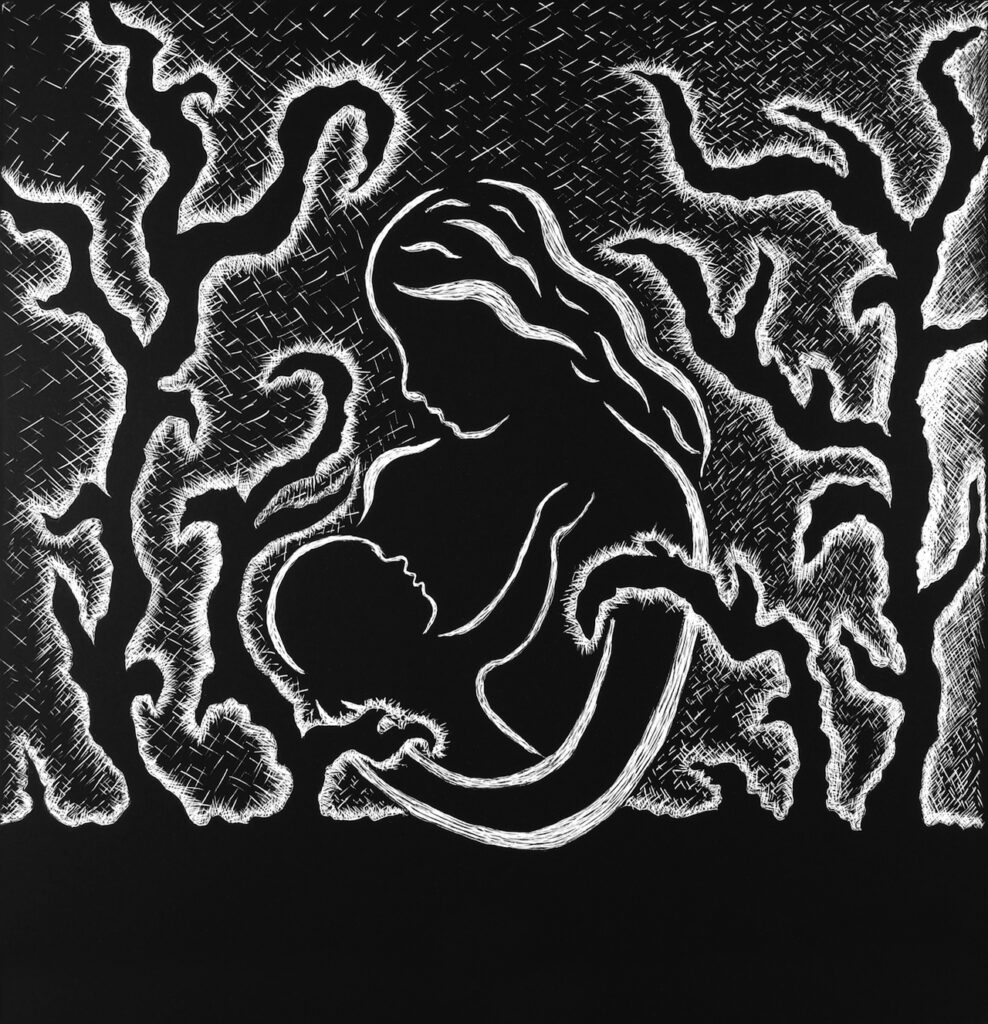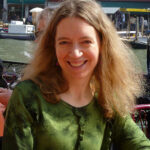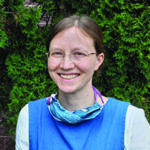by Eileen Kinch, originally published by Anabaptist World and available here
Artist Spotlight: Rachel Epp Buller, Bethel College

Anabaptist World: How did you become an artist?
Rachel Epp Buller: I was always making things as a child, so I think that identity developed over a long period of time, before studying art as well as after. I completed a bachelor’s degree at Bethel College, master’s and doctoral degrees at the University of Kansas, and then a Master of Fine Arts from the University of Plymouth. But lots of learning happens outside the classroom as well, from friends and mentors, travels and other life experiences.
AW: How does Mennonite identity influence your art?
REP: I suppose I would say that it shows up in my interest in family and cultural histories and the ways that traditions of making are passed down through generations. I don’t make religious art, although one of my pieces did make it into the Voices Together hymnal.
AW: What artistic media do you work in?
REP: I used to consider myself primarily a printmaker and book artist, but in the last number of years, I’ve gotten much better at listening to the ideas themselves to see what form they need to take. Which means that I still make prints and artist books but also work in embroidery, letters, installation, and sound.
AW: You are both an artist and an art historian. How do you see your training in art history shaping your studio practice?
REP: As an art historian, I am always interested in questions of context—what are the historical, social, political, religious, or other contexts, as well as artistic influences, that impact an artist’s work—so I suppose I pay attention to that in my own work as well. For years I kept these two practices quite separate, but these days I’m more intentional about blending them, wanting to see how each voice, writing style, or mode of inquiry helps me approach a particular research question. I’m currently at work on a book about listening as artistic method, and this book contains art historical essays as well as artistic inquiries, case studies of a sort into listening. This kind of publishing departs pretty significantly from my earlier books, so I’m excited to see it unfold.
AW: Some of your work engages motherhood and women’s bodies. How did these themes come to interest you?
REP: There’s a long history of art that simultaneously features/objectifies women’s bodies and writes certain bodies out of history. That applies to characteristics of age and race but also maternal status. For centuries in Western art, the mother’s body was almost nowhere to be found, apart from ubiquitous depictions of the Virgin Mary. It’s only really since the Feminist Art Movement of the 1970s, which validated the life experiences of female artists as artistic source material, that we’ve seen artists of the late 20th– and early-21st centuries making work that directly speaks to their status as a parent, or to the cultural expectations and pressures on women to become mothers.
My first book, Reconciling Art and Mothering, emerged from a place of wanting to write some of those histories and also to gather stories from contemporary artists, about ways they managed amid art world practices that continue to be discriminatory. Mothering Mennonite, a book that Kerry Fast and I dreamt up and edited together, addressed a similar absence in written histories specific to our shared background. While Marlene Epp had done significant work by that point into Mennonite women’s experiences, there was at that point almost no writing specific to the experiences of Mennonite mothers and their roles as carriers of tradition, as well as the cultural expectations placed on Mennonite women regarding maternal roles. We were proud of the rich and varied lineup of writers we were able to feature, and also happy that one of our contributors, Mary Ann Loewen, edited her own volume on Mennonite fathers several years later.
AW: You did a recent exhibit called In/Visible Care. Could you describe the exhibit? What was your experience of it?
REP: This was an installation in the Outlook Gallery at the Minnesota Center for Book Arts, a window gallery that is primarily viewed from the sidewalk. The exhibition featured my ongoing project of Taking Care, a participatory project in which I solicit stories from audience members about a time when they felt cared for. I listen to the stories over a sustained period of time by embroidering phrases from the sharing and then displaying the pieces in an installation that makes publicly visible these often-private acts of care. During this iteration of the project, I spent long days in the window, embroidering and on display as I performed these labors of care. The location brought a different kind of visibility to my actions than I’ve previously experienced.
AW: What do you hope people will learn or take away from your work?
REP: Whether it’s a sound piece or a participatory invitation or a drawing with tiny mark-making or an installation with parts that need to be read, I hope that all of my work will prompt audience members to stop for at least a moment and pay attention.

RACHEL EPP BULLER
Rachel Epp Buller maintains a dual critical and creative practice as an art historian and visual artist. As an artist, Read More

EILEEN KINCH
Eileen Kinch is digital editor at Anabaptist World. She lives near Tylersport, Pennsylvania, with her husband and two cats. She Read More

